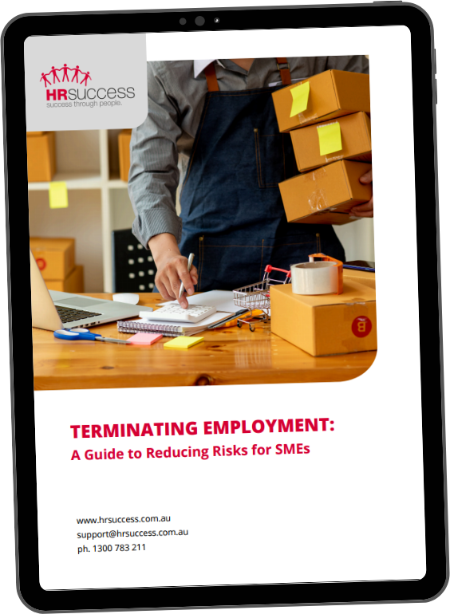There have been some significant changes to casual employment law following the passage of the Fair Work Legislation Amendment (Closing Loopholes No. 2) Act 2024. These changes take effect from August 26, 2024.
Here’s an overview of what’s changing and what you need to do to prepare.
A New Definition of Casual Employee
The legislation introduces a new definition of a casual employee. Under this definition, an employee is only a casual if (a) there is no firm advance commitment to continuing and indefinite work, and (b) the employee is entitled to receive a “casual loading”.
In determining the validity of a casual employment arrangement, the ‘real substance, practical reality and true nature’ of the employment relationship needs to be considered (relying entirely on the written terms of the contract will not be sufficient). Factors to be considered when reviewing the true nature of the relationship would generally include:
- whether the employer can offer or withhold work, and if the employee can, in practice, accept or reject work
- the likelihood of future work being available within the business, based on the nature of the business
- whether full-time or part-time employees are performing the same kind of work, and
- whether the employee has a regular pattern of work.
This new definition is significant, for a couple of reasons. Firstly, it will require that not only the terms of the employment contract be considered but also the totality of the employment relationship when categorising employment. For example, the new test will invite a more detailed examination of a business’ operations and rostering plans, not just the discrete relationship that exists between the employer and the individual employee.
Secondly, the new definition will also allow an examination of not just the intention of the parties when they first enter into the employment relationship, but also after the fact (that is, whether the intention and reality of the parties actually changed at any point during the relationship).
Note that an employee who commences as a casual employee AND is correctly engaged as a casual employee, will remain casual until their employment status changes either through:
- a conversion process (such as the employee-choice pathway described below), or Fair Work Commission order, or
- they are offered, accept and start working on an alternative full-time or part-time basis.
Employee-Choice Pathway for Casual Conversion
The current casual conversion arrangements will be abolished for new employees from 26th August 2024, and a new ‘employee choice’ pathway introduced. Key points of the new process include:
- Eligibility: Employees who have worked for at least six months (12 months for small business employers, that is, those with fewer than 15 staff) can notify their employer in writing if they believe they no longer meet the casual employee definition and should be converted to full or part-time employment.
- Employer’s Response: Employers must consult with the employee and respond in writing within 21 days, either accepting the notification or refusing it on specific grounds such as the employee still meeting the casual definition, operational grounds, or legal compliance issues.
- Dispute Resolution: The Fair Work Commission will have the power to handle disputes regarding these new arrangements, including compulsory arbitration.
Note that casuals employed prior to 26th August 2024 will continue to have access to the current casual conversion arrangements until 26th February 2025 (for those employed by non-small business employers), or until 26th August 2025 (for those employed by a small business employer). After this time, the new employee-choice arrangements will also apply to those employees.
Changes to Issuing the Casual Employment Information Statement
The current process for issuing casual employees with a copy of the Casual Employment Information Statement is also changing. The statement is available from the Fair Work Ombudsman website (www.fairwork.gov.au).
Bonus tips: be sure to download the statement from the website each time to ensure you are using the current version (noting that a new version will be released on or just before 26th August). Also ensure you keep records of to whom, how and when you issue the statement.
Under the new arrangements, the statement will need to be provided to:
- new casual employees before, or as soon as possible after, the start of their employment
- all casual employees employed by non-small businesses as soon as possible after
- 6 months of employment
- 12 months of employment and every subsequent period of 12 months of employment
- all casual employees of small businesses as soon as possible after 12 months of employment.
New Protections for Casual Workers
The new provisions introduce additional protections to ensure fair treatment of casual employees, making it unlawful for employers to:
- dismiss or threaten to dismiss an employee in order to re-engage them as a casual worker, and/or
- knowingly make false representations about casual employment.
Violating these provisions will attract penalties for breaches, the amount of which is still to be published.
SO WHAT SHOULD EMPLOYERS DO?
Employers should take steps to ensure that their employment contracts not only correctly reflect the intended casual employment relationship, but also ensure that casual employees are treated as true casual employees (under the new definition), if it is intended for these employees to remain casual.
For example, review and consider:
- whether employment contracts for your casual employees clearly set out a true casual employment relationship;
- how you are rostering your casual employees (it will be easier to justify casual employment where engagements are sporadic, ad-hoc, irregular and without an expectation of ongoing work);
- any systematic/regular pattern of work for your casual employees (noting that the more systematic and regular it is, the less likely it is a genuine casual arrangement);
- whether there is a requirement for casual employees to agree to rostered shifts (that is, can they actually reject the work in practice?); and
- whether they are entitled to receive a casual loading.
Be sure to also implement a process to manage the issuing of the Casual Employment Information Statement to employees in accordance with the new requirements, and maintain associated records.
If you require assistance with determining how casual arrangements work, with changes to casual employment contracts or with changes to your casual conversion procedures, please let us know.
This information is of a general nature only and applies to employers/employees under the Fair Work system (which is most employers/employees), It is not formal or legal advice. Information is we believe current and accurate at the time of publication – 31/07/2024.


